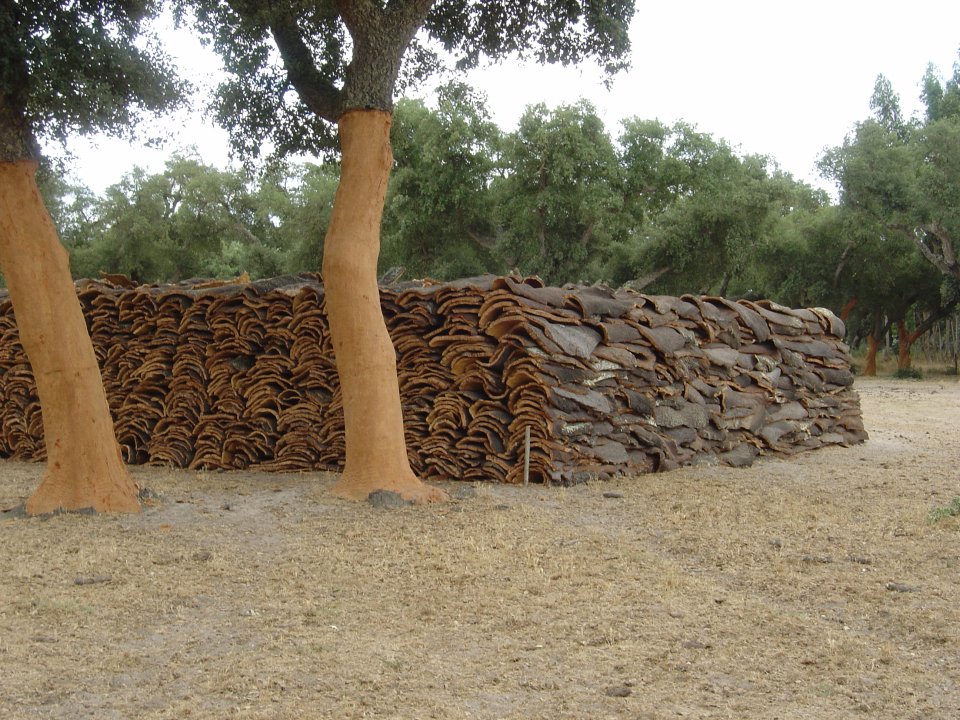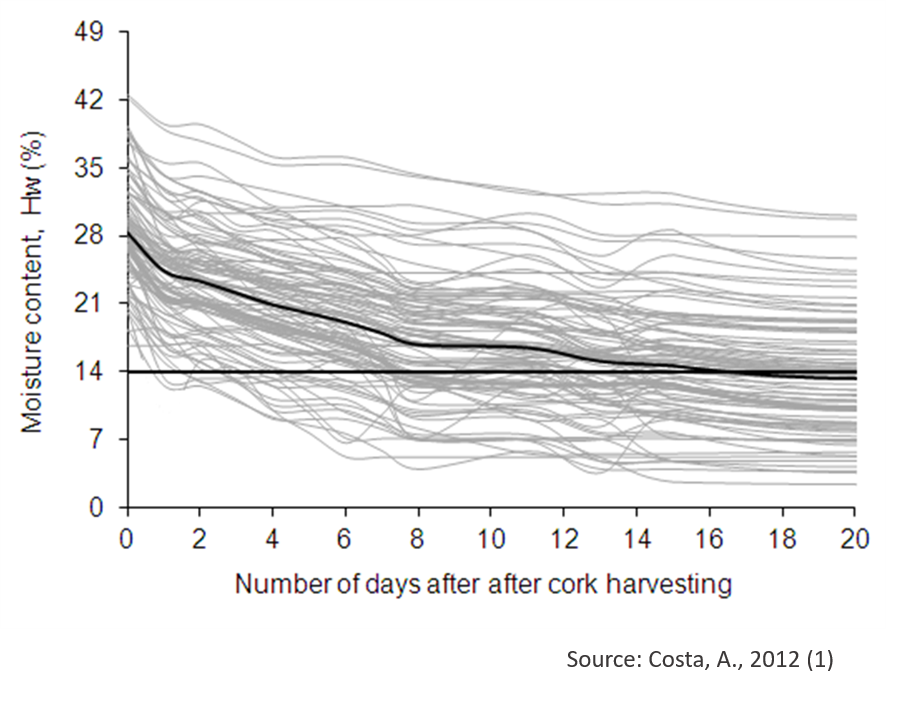
The humidity of cork has always been a parameter considered in its commercialization, and is usually expressed as a percentage discount on the total cork quantity. Percentual moisture discounts are usually incorrectly applied, as they are applied directly to the quantity of cork. The same discount applied to cork with different moisture's content can translate into discounts in quantity of cork and not water.
This factsheet intents to inform the cork producers for the relevance of cork sampling for moisture content determination in order to establish the humidity discount in the cork business.
Until the 90's, moisture discounts of 20% were common despite the existence of a standard from IPQ - Portuguese Institut for Quality, which refers to the 14% moisture content to consider commercially dry cork (NP ISO 1216: 2011) . In reality, this reference value has never been formally integrated into commercialization, perhaps due to the absence of practices and rotines for quantifying cork moisture in the field or to the fact that stacked cork can reach humidity values below 14% until it is transported during the summer.
In 1995, this problem was addressed by the Forestry Institute with the publication of a leaflet with the correct formulas for applying moisture discounts to the sale price or to the quantity of cork.
It is agreed that no moisture discounts are applied in case of stacking after 21 days had passed.
In other business (eg. transportation to the plant) discounts are less than 20% but still away from the real values.
In the commercialization, seller and buyer should agree on the reference humidity to which the proposed price refers. At the time of the sale, the humidity content of cork could be determinated and the atual quantity of cork could be calculated for the agreed reference humidity. Sampling for determining the humidity content can be carried out during extraction or when loaded in the transport to the factory. In the case of post-debarking samples, these must be cut from the cork plank imediately after the removal from the tree, not when they are stacked in the soil, because the loss of humidity is quite rapid at this early stage.
As well as the quantity of cork and its quality, the moisture content of cork is another parameter that must be known in order to negotiate better.
- Find out what are the current humidity discounts in practice on the market and negotiate your humidity discount based on real values (requesting the determination of the humidity of the cork with your Association of Forest Producers);
- Monitor the extraction and the humidity samples collection, ensuring a minimum number of 30 pieces/ humidity sample;
- Collect the samples from the inside of the cork plank and not from the outer limits;
- Collect the samples immediately after debarking (determination of humidity at debarking) or when loading into the transport to the factory (determination of humidity at the farm gate);
- Pack the cork samples in plastic bags and transport them inside a small freezer until the lab.
The importance of knowing the moisture content of cork lies in increasing the transparency in the commercialization process, ensuring that the real quantity is traded and that there are no hidden margins resulting from different moisture contents.
In the commercialization process, instead of agreeing on a moisture discount, since the real moisture content can be quantified by drying the samples in an oven at 103ºC to constant weight, the seller and the buyer should agree on the reference humidity at which the proposed price refers.
Although less rigorous, the average humidity values quantified by Costa (2012) [1] could be considered in the commercialization process.
Although laboratorial procedures for humidity determination are established and an IPQ standard for cork humidity exists, technological developments to assess cork humidity from the exterior with humidity sensors, for example, are needed as well as studies on how to sample humidity at the cork forest.
The study of possible relationships between cork humidity evolution and the phelogen activity could also provide some new information about the previous conditions necessary for the beginning of the debarking annual season.
Conceição Santos Silva, mcssilva@unac.pt, www.unac.pt
Further information
- Costa, A., Pereira, H., 2012 – Drying kinetics of cork planks in a cork pile in the field. Food Bioprod Process http://dx.doi.org/10.1016/j.fbp.2012.08.002
- Reis, A., 1995 – Conhecimento da humidade a que se referem a quantidade e o preço da cortiça acordados para efeitos de transacção comercial. Um importante passo no sentido do aumento da transparência do processo de comercialização da cortiça no mato. Divisão de Estatística e Estudos Económicos. Instituto Florestal. Lisboa.
UNAC - Mediterranean Forest Union

Moisture content (%) in 97 cork planks over 20 days air drying (grey lines) with the average moisture content (black line) and the reference value of 14% (cork commercially dry standard - straight black line). Source: Costa, A., 2012 (1)
